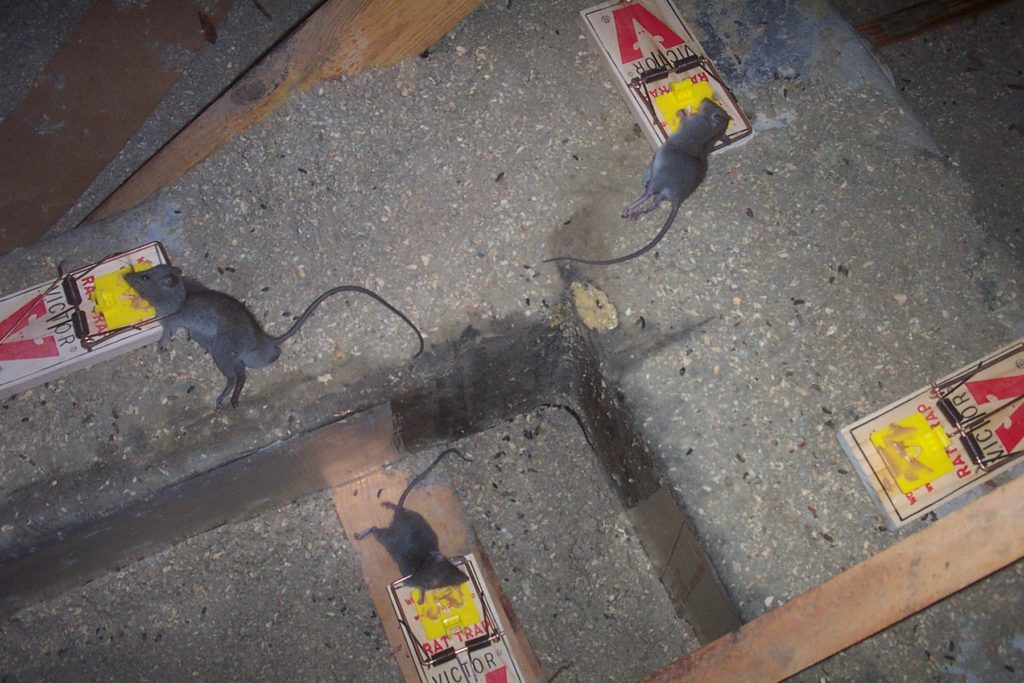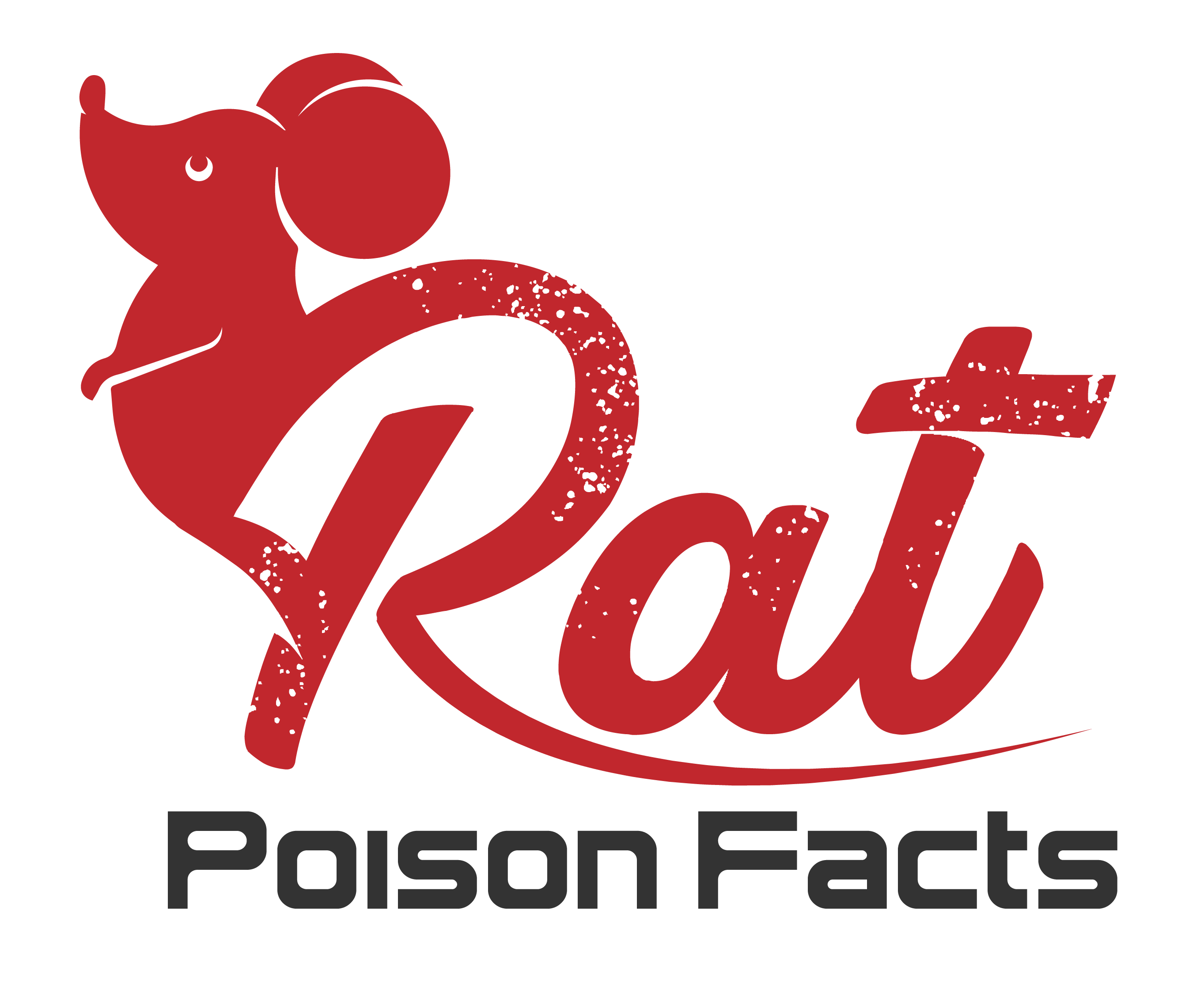
Figuring out how to kill the rats in your home is only the first step in the process of removing these rodents and keeping them out. You will also need to figure out where the dead rats are so you can remove them.
If you used snap traps or a similar method, then the dead rat should be wherever you left the trap. However, if you used poison or the rat died naturally, you will have to rely on other methods to find the rat. This added difficulty of removing the rat is just one of the many reasons that you should think twice before using poison to control rats.
1. Always Use Safety Gear
Anytime you handle the rat and especially when you are getting ready to dispose of it, you need to make sure you wear enough safety gear. At the very least, wear protective clothing, gloves, and a dust filter mask or respirator.
With your gear in place, you are ready to start looking for the rat so you can remove it.
2. Look for Signs of the Rat’s Presence

As you start your search for the dead rat, look for visual cues. Some signs you should look for are:
These may indicate that the rodent frequented a given area.
3. Use Your Nose
Your nose will likely be the best tool at your disposal when it comes to finding a dead rat. Just follow your nose and let it lead you where the bad smell is the strongest.
The thing to keep in mind here is ventilation. If the vents in your home connect two rooms together, you may smell the rodent in one room while it is actually in the other.
You should also remember that warm air currents increase the intensity of the smell, as does humidity.
Be Patient
Using your nose requires a bit of patience and going back and forth around your home. First, start by narrowing the rat’s location down to one room. From there, you want to smell around the walls and look for shifts in the scent. You should notice a different smell when you are within a foot or so of the dead rat.
4. Make a Small Hole
Once you think you know where the dead rat is, you will need to make a small hole in the wall or ceiling. Cut a very small hole at first so you can confirm that you did indeed find the rat. You can then make it as large as you need to remove the rodent.
Remember to repair the hole you make after you clean the space. This will require a drywall patch and a bit of spackle.
5. Dispose of the Dead Rat
Once you have the dead rat, it is time to dispose of it. You can throw it out with your normal garbage in most areas of the country, and assuming that you bag it up properly, no one will ever even realize you have a dead rodent in your trash.
Double Bag
If you do decide to throw out the dead rat with your regular garbage collection, always double bag it, or use more bags. This prevents the smell from leaking out, minimizes the risk of a dog or cat opening the bag and getting to the dead rodent, and reduces the risk of flies accumulating by the garbage.
Check Your Local Regulations
Although many places let you legally throw out dead rodents with your garbage as long as they are properly bagged, you should always double check. You can just confirm with your local public animal control service. They will let you know if you can throw it out and if there are any specific requirements to doing so.
Consult a Pest Control Expert
If disposing of the rat in this way is not legal in your area, then you can ask your local animal control service what to do with it. Alternatively, you can ask a local pest control expert what to do. They may even be able to remove and dispose of the rat for you.
6. Clean the Area Thoroughly
After you find and remove the rat, remember to thoroughly clean the area. Use an enzymatic cleaner as this will break down the bacteria and lingering foul odors. You may need to remove and replace some of the building materials in the area as well, especially if there was significant excess fluid production.
Why Remove the Rat
You may be tempted to just leave the dead rat, but this is a bad idea for several reasons. The odor will likely be the first thing to get to you as dead rodents smell very bad. You will also have to deal with flies, which will definitely leave eggs that turn into maggots if you leave the rat alone. There is also a higher risk of disease if you still have the rat in your home.
Remember to Prevent Future Rats
After you find and remove the dead rat from your home, make sure that you take steps to prevent more rats from taking its place.
Maintain Your Home
Ensure your home remains well-maintained so the rats do not have a way to get inside. If there are no cracks or gaps, nor any openings by pipes or drains, then the rats are unlikely to get inside.
Remove Food Sources
You should also get rid of any potential food sources that may be tempting the rats. This means keeping your kitchen clean, sweeping up crumbs, securing garbage cans, and storing leftovers in airtight containers.
Overwhelmed? Let Professionals Find and Remove the Rat
If you are overwhelmed by the idea of trying to find the dead rodent yourself, you can also just leave it to the professionals. They have years of experience finding and removing dead rodents, so they are more likely to find the carcass quickly.
They know which subtle shifts in scents to look for, giving them an advantage. Their expertise also reduces the risk of you drilling a hole in your wall to find the rat, only to discover that your nose was wrong and it is somewhere else.
